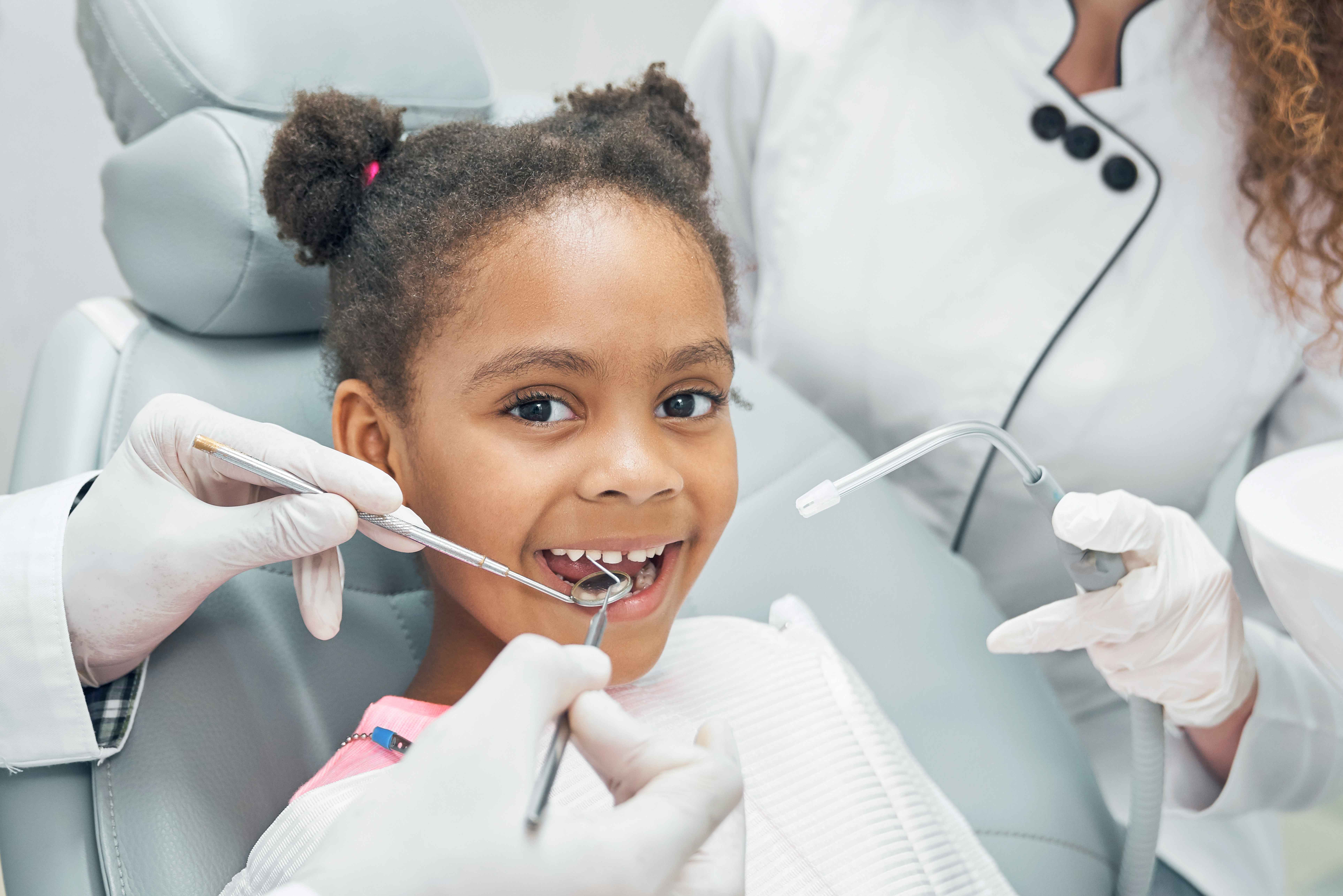The Ultimate Guide to Children’s Dental Health: From First Tooth to Teenage Braces
 A child’s smile is more than just adorable — it’s a window into their overall health and development. But caring for that smile is a journey that starts earlier than many parents realize. From the first baby tooth to the day braces come off, every stage of dental care plays a vital role in building strong, confident smiles. Whether you’re searching for pediatric dentist near you or want to understand the best childhood oral care for your little one, this guide breaks it all down — from tiny pearly whites to full teen smiles.
A child’s smile is more than just adorable — it’s a window into their overall health and development. But caring for that smile is a journey that starts earlier than many parents realize. From the first baby tooth to the day braces come off, every stage of dental care plays a vital role in building strong, confident smiles. Whether you’re searching for pediatric dentist near you or want to understand the best childhood oral care for your little one, this guide breaks it all down — from tiny pearly whites to full teen smiles.
1. First Tooth, First Visit: Laying the Foundation
A key rule in children’s dental health? Don’t wait. The American Academy of Pediatric Dentistry (AAPD) recommends that a child visit the dentist by age 1 or within six months after the first tooth erupts.
Why so early?
- Baby teeth guide permanent ones, providing space and pathways.
- Early checkups help prevent cavities and monitor oral development.
- Gentle visits build lifelong comfort with the dentist.
Tips to Help Your Child Prepare for Their First Dental Visit:
- Time the Appointment Wisely: Schedule the visit when your baby is usually well-rested and fed — avoid nap or mealtime windows to prevent fussiness.
- Bring Comfort Items: A familiar blanket, teething toy, or pacifier can help soothe your baby during or after the visit.
- Stay Calm and Comforting: Your baby will take emotional cues from you. Stay relaxed, smile often, and talk gently during the appointment.
- Have the Essentials Ready: Bring your baby’s medical history, immunization records, and a list of any teething or feeding concerns you’d like to discuss.
- Know What to Expect: The first visit is usually short and more educational for the parent. The dentist may examine your baby’s mouth while they sit on your lap.
2. Building the Dental Home: Lifelong Trust
Once your child meets a children’s dentist (also called a pedodontist), they begin establishing a “dental home” — an ongoing trusting relationship grounded in preventive, age-appropriate care.
A dedicated kids’ dentist:
- Completes thorough exams of teeth, gums, and jaw.
- Offers cleanings, fluoride varnish, and sealants to protect enamel.
- Monitors growth, development, and tooth spacing.
- Helps guide thumb or pacifier habits before they affect alignment.
Families look for clinics offering pediatric dental checkups, with caring teams who make visits fun and confidence-building.
3. Daily Dental Care: Your Role at Home
Solid oral hygiene habits start early — and parents are the foundation until kids are around six.
Here’s what good dental care looks like for each stage:
0–1 years:
- Brush with a soft cloth or brush after feeding.
- Once teeth erupt, use a tiny, rice-grain–size smear of fluoride toothpaste
1–3 years:
- Brush morning and night with a pea-sized amount of fluoride toothpaste.
- Supervise brushing thoroughly until the child becomes self-sufficient around age six.
3–6 years:
- Continue twice-daily brushing and introduce flossing once teeth touch.
- Regular pediatric dental checkups every six months catch issues early.
Nutrition check:
- Limit sweet snacks, sugary drinks, and frequent snacking.
- Encourage drinking water (ideally fluoridated) and eating tooth-friendly foods
4. Managing Common Childhood Dental Issues
- Bottles & Caries (“Baby Bottle Tooth Decay”): Never let babies sleep with juice, milk, or formula — hugely increases the risk of decay.
- Thumb-Sucking & Pacifiers: These habits can reshape dental arches if prolonged past age three. Pediatric dentists offer gentle guidance and, if needed, appliances to help transition.
- Early Trauma: Falls happen. If a tooth is knocked out or bleeding, call your pediatric dentist right away. Many clinics accept emergencies and same-day visits.
5. Orthodontic Preparation & Teenage Braces
Later childhood brings a shift toward orthodontics.
When to Start: Between ages 7–9, your pediatric dentist will evaluate jaw growth and bite alignment — what they call Phase I orthodontics.
Common orthodontic treatments include:
- Traditional braces for complex misalignment.
- Clear aligners for aesthetic correction in mild-to-moderate cases.
- Retainers or expanders to guide growth and spacing.
- Teen checkups, every 6–8 weeks, to track progress.
6. Finding a Great Pediatric Dentist Near You
Searching for pediatric dentist near you? Many offices offer combined pediatric and early orthodontic services so treatment is streamlined and less disruptive to school and life.
Key qualities to look for:
- Board-certified pediatric dentist with specialized training.
- Kid-friendly environment — fun, calm, and playful.
- Gentle behavior management and distraction tools.
- Easy scheduling for regular and emergency visits.
- Digital tools (scans, baby X-rays), fluoride and sealants, orthodontic readiness.
7. What Parents Should Do Now
- Book the first visit — by age 1 or after the first tooth arrives.
- Create a dental routine — brush, floss, and monitor habits daily.
- Ask about sealants and fluoride, especially as molars erupt.
- Watch for orthodontic signs — crowding, bite issues, or digging teeth.
- Stay consistent — every six months with a pediatric dental home for a lifetime of healthy smiles
Conclusion
For many parents, finding the right dental care for their children means more than just booking routine cleanings — it’s about choosing a practice that understands the unique dental needs of kids as they grow. Pediatric dental health isn’t just about preventing cavities; it also involves monitoring how the teeth, jaws, and facial structure are developing over time.
That’s why many families prefer clinics that offer a comprehensive range of services under one roof, including regular checkups, cavity protection, fluoride treatments, and early orthodontic assessments. When these elements are integrated into a child’s ongoing care, it becomes easier to identify and address potential issues — like crowding, bite misalignment, or jaw discomfort — before they become bigger problems. This kind of continuity not only makes visits more efficient for parents, but also helps build trust and familiarity for the child. So set the stage for a lifetime of healthy habits and confident smiles.








